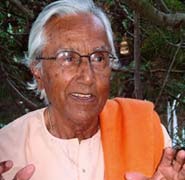




Opera Omnia
Presentation
Every time – and in a publishing house’s lifespan this may happen only a few times – that we decide with an author to publish his Opera Omnia, we cannot but live a moving experience.
The author, in fact, draws up the structure of his own work: the Opera Omnia is therefore a “new”, self-existent work, it becomes his own novel, his offer to the readers. It is completely different from an author’s Opera Omnia compiled after his death by a committee of experts: an enormous philological work, trying to grasp the hermeneutic that the author would have carried out on his own work; this would be, at the best, an accurate collection of his writings, but not what the author himself intends to propose today to the reader.
The Opera Omnia is therefore self-existent, drawn from scratch, a brand new work.
For Panikkar, the above has a very particular meaning.
This Opera touches many of what we usually define as disciplines: Philosophy, Theology, Anthropology, Culture of Peace, Theology of Religion, Spirituality, etc. though for Panikkar there does not exist a sharp distinction among them.
Panikkar has not only produced a vast number of works, but throughout his life he has constantly revised and re-edited many of his writings (the best example is The Unknown Christ of Hinduism). This means that his works have been updated, following the evolution of his thought.
Though some of his works may be dated and defined as more juvenile, most of them have been accompanied by the author throughout his life.
Panikkar’s writing can’t be considered only a meditated result of his studies. It is hermeneutic of an experience. He says, in the leading article of the Opera Omnia:
“I didn’t live to write, but I wrote to live in a more conscious way and to help my brothers with thoughts streaming not only from my mind but from a superior spring”.
For Panikkar, knowledge and experience go together; they constitute a developing work, an experimental type of knowledge made available to the reader, whose task goes beyond intellect.
The Opera Omnia, then, is not only a whole collection of Panikkar’s works, but it’s the actual heritage of his path.
Philologists may study different editions of his works, but what Panikkar publishes in his Opera Omnia is, in a significant part of it, the today of his path, that the reader can appreciate in its maturity.
To remind us of the stages of this “journey”, the introductions that Panikkar made for the most important editions still exist and were kept by him. These introductions do not testify a change of horizon but new insights. In an Opera Omnia, this is extremely precious.
Panikkar has a non-western attitude, avoiding historicizing himself, his knowledge and his experiences.
Other authors in their Complete Works published those issues that came out in the debates following the publication of every new text, adding the answers to the objections.
The various introductions, with their dating, testify to the evolution process in Panikkar’s works and the related debates.
In the choice of the material and in the organization of the structure Panikkar has had at his side Milena Carrara who has translated and edited many of his books and is in charge of the editing of his Opera Omnia.
*
To begin with the volume on Mysticism is somehow symbolic, because it shows Panikkar’s striving to pass on his own experience through his writings, and “mysticism is the full experience for a man”.
I hope that this Opera Omnia will not merely stimulate further studies but experience. To start with the volume on Mysticism is the best auspice.
SANTE BAGNOLI
President Editoriale Jaca Book
Milano, 2008
official site